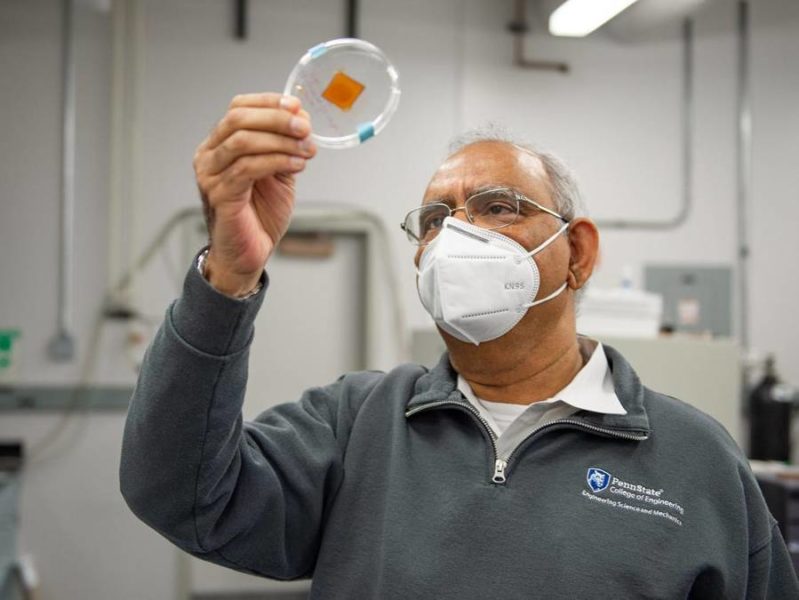Typically recorded in photographs, fingerprints at a crime scene can help identify perpetrators and ensure they are brought to justice. But a photo of a fingerprint may not deliver the most comprehensive picture possible, according to Akhlesh Lakhtakia, Evan Pugh University Professor and Charles G. Binder Professor of Engineering Science and Mechanics.
Lakhtakia received a $300,000 grant from the Criminal Investigations and Network Analysis Center to explore a technique for creating 3D holograms of fingerprints. The grant will support two years of research in collaboration with researchers at the University of Dayton.
“Why store fingerprints as 2D objects?” Lakhtakia said. “When you impress your fingers on a surface, the print you leave behind is a three-dimensional object. It’s a ridge-and-valley structure, with sebaceous ridges about a tenth of a millimeter tall. So why are we throwing away the potential of the third dimension?”
To create the 3D image, the researchers will first deposit fingerprints on a number of materials, including glass, wood and polyethylene. They will then age the fingerprints for each material in different environmental conditions — humidity, dryness, cold and room temperature — for a day or a week.
The researchers will then coat the fingerprint with a very thin layer of metal, chosen to best suit the underlying material, in a method developed by Lakhtakia and his collaborators in earlier research. This metal layer will preserve the fingerprint pattern so it will withstand the energy from an optical laser scan. The scan will allow the researchers to construct a 3D digital hologram of the fingerprint pattern.
“Holography enables us to examine an object from different view angles, which can’t be done with a 2D fingerprint,” Lakhtakia said. “We aim to develop the prints so that a fingerprint examiner can make a better determination.”
Lakhtakia and his collaborators will work with the Miami Valley Regional Crime Laboratory in Dayton, Ohio, to establish an evaluation scale for the 3D holograms similar to the 8- to 12-point identification standards for 2D fingerprint images. Since fingerprint identification must be verified by an examiner to be used as evidence, Lakhtakia said, creating a grading scale is essential to helping examiners make the right match.
Lakhtakia aims for the research to advance forensic science technology, as well as other fields.
“Identifying fingerprints has implications for more than catching perpetrators,” he said. “It’s also important for biometrics, background checks and more. It’s important to improve the various processes that require the identification of actors beyond the criminal justice system.”


